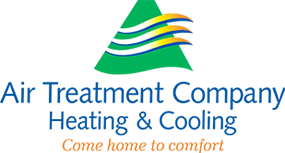Safety Features on Your Furnace
We rely on our furnaces for warmth all winter, but these are complex machines that have risky components. Thanks to technologies and the work of HVAC professionals, we can feel secure using furnaces that are safe and keep us cozy.
Here’s what you need to know about the safety features of your furnace.
Thermocouple/Mercury Flame Sensor
On a gas furnace, the pilot light is a flame that burns gas on the burners. This process generates heat, which is used to warm your home. During regular use, the pilot light may go out. When it does, gas is emitting from the unit but is not being burned off. This creates an excess of gas, which could potentially spread to other parts of the house. A single spark could ignite the gas and cause an explosion.
Enter: the thermocouple. This device is connected to the gas valve and can shut it if the pilot light goes out. This can be a life-saving feature, especially if you are not aware of a problem soon enough.
A mercury flame sensor performs a similar job but is mainly used on newer furnaces. With modern units, electronic ignition is used for the pilot light. Nonetheless, this device will stop the flow of gas when the light goes out.
Limit Switch
While the temperature inside the furnace can get pretty hot, it shouldn’t be getting too hot. Luckily, we have a limit switch to fix a furnace that runs hot. If the temperature outside the combustion chamber gets too high, or flames are reaching outside the chamber, the switch will turn the gas off to prevent a fire or other hazard.
Carbon Monoxide Detectors
Well, technically these are not part of your furnace, but they are crucial to a healthy and safe home environment. Your furnace, as a gas-powered unit, is an emitter of carbon monoxide. Carbon monoxide is a potentially fatal odorless gas, which is a by-product of the combustion process.
Though manageable with the proper use of a furnace, there can be issues if too much is released. That’s why a carbon monoxide detector is essential. It will detect excess levels of carbon monoxide and alert you to take action.
If your detector goes off, exit your home immediately and call 911. In the event of a gas leak, you’ll need to get your furnace checked out by a qualified professional before turning it back on.
The Importance of Routine Maintenance
Even though your furnace has safety features built-in, it doesn’t mean they are a cure-all. Similarly, these parts, just like any others, will eventually need repair or maintenance. That’s why it’s crucial to get your HVAC system reviewed by a professional every year (once for the furnace, once for your AC).
During an inspection, an HVAC technician can look at these safety components and make sure they are working properly. This will take the guesswork out of making sure your family stays safe while using your furnace.
Keeping Your Home Safe and Warm
Air Treatment Company is dedicated to giving you peace of mind that your furnace is working properly and its safety features are operational. To schedule an inspection, call us today at (703) 270-0881.


.2103100901550.png)